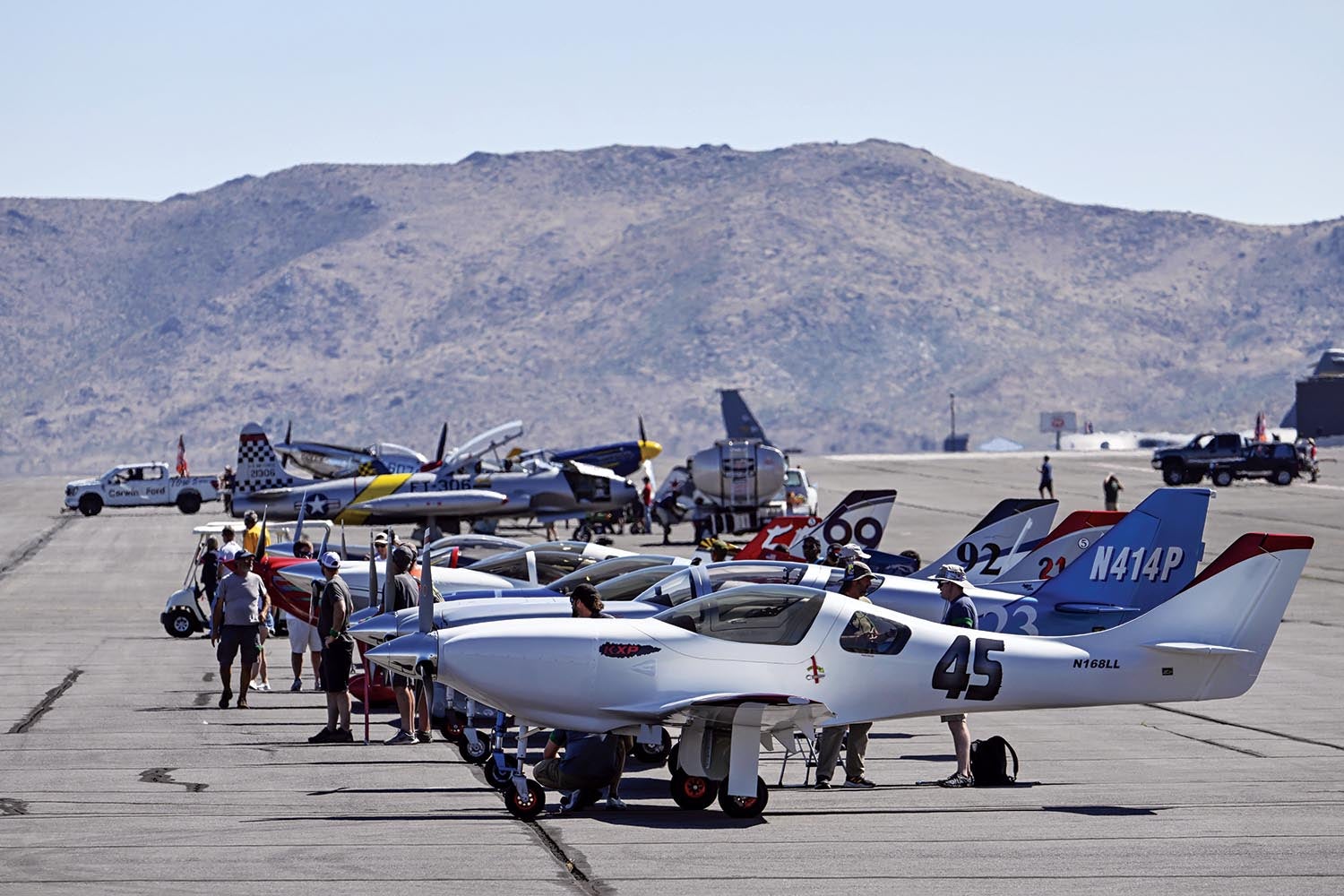 As we look ahead to Reno-less air racing, it seems certain that Formula 1, Biplanes and the lesser Sport class machinery will be found rounding pylons as part of local or regional airshows. Sport has led the way with a Sport-only race at Las Cruces, New Mexico, scheduled for October 21, 2023. So the good news is there is racing post-Reno and potentially more people will be exposed to it. It’s going to take time for F1 and Biplane to catch up to Sport, but the ball is rolling.
As we look ahead to Reno-less air racing, it seems certain that Formula 1, Biplanes and the lesser Sport class machinery will be found rounding pylons as part of local or regional airshows. Sport has led the way with a Sport-only race at Las Cruces, New Mexico, scheduled for October 21, 2023. So the good news is there is racing post-Reno and potentially more people will be exposed to it. It’s going to take time for F1 and Biplane to catch up to Sport, but the ball is rolling.
After that all bets are off. Everyone is hoping RARA, the Reno Air Racing Association, finds a great new place to race, but that is a tall order. There is the insurance issue and then the challenge of finding a location with a large, multi-runway airport with miles of wilderness on one side and 1000 hotel rooms with entertainment and good airline service on the other.
Another question is how RARA as an organization transitions to a new racing era. Can RARA survive the self-examination required after admitting the great, established venue that was Reno-Stead was lost on their watch? Yes, there were external factors of encroachment and possibly what the Reno-Tahoe Airport Authority (essentially the city of Reno) wants to do with their airport, but falling attendance, the fading Unlimited class and RARA’s apparent inability to welcome new efforts and ideas raise doubts.
Some (Modest) Ideas
If losing Reno hurts, it’s also the rare opportunity to reform air racing in line with a changing world. If nothing else, those running things could get a little younger with the energy and new thinking that accompanies a sea change in management. Greater use of widely available video cameras and other technologies could greatly reduce reliance on the legions of aging volunteers Reno needed to put on their show. Fewer or no people under the pylons might help with insurance.
Those same video cameras could be used to stream the races to a worldwide audience. Many people don’t physically attend events; they do it digitally on their phones. Air racing must tap into that. And let’s note that RARA did a great job of posting results very quickly and archiving them for easy research. They have a start on going digital.

Today’s public doesn’t have the instant attraction to warbirds the old Reno crowd did and air race organizers should have recognized this. Sport planes are just as, if not more, interesting to mainstream audiences today. So would be new homebuilt Unlimiteds. There’s absolutely no reason to present the Sport class as second-class citizens as was done at Reno. The quicker the Sport Air Racing Council can get the fast, entertaining Sport Gold racers into a headlining position at their own events the better.
Another big one is the excessive time and money air racing asks of its participants. A dedicated Reno racer easily spends two weeks of otherwise free time attending the Pylon Racing Seminar and the races themselves. Much of this is spent sitting in long, repetitious briefings and not overly useful heat races. There is much downtime and generally it’s asking too much of racers to tie up every vacation and family day of their year for what is ultimately a 10-minute race. A new schedule with a three-day maximum of qualifying and racing would help, and of course for smaller events one day is all you need. For those saying the pilots need the extra seat time to regain currency on the pylons, attending two or three races a year instead of just one long one will do the same or better.
With the classes learning how to hold their own races—in addition to the one big headline National Championship Air Races RARA puts on—there is the potential for running some of the class races differently. Our informal polling of Formula 1 racers, for example, says they’d be happy to run a few non-spectator, no-prize-money events. Club racing, in other words. Imagine how much easier such events could be to hold with the risk exposure hugely reduced. Adding such events would be a boon to currency and new pilot training.
Then, to think really big, air racing needs a home. That is, an airport owned or leased by racers or a class, along with the surrounding land. This would minimize both physical and bureaucratic interference, allowing teams to establish semi-permanent shops and practice there. Pylon seminars could be run, sponsors entertained, commercials shot, race teams housed and the sport nurtured year-round. It would take real sugar daddies to make happen, but other motorsports have taken this approach to securing their future and it’s worked.
Getting back to the immediate short term, racing is headed to a fragmented few years where scattered, single-class races will be run inside existing airshows. In this now-upon-us meantime we’ll await the return of the one large, vital, multi-class event, one that could serve as the champion-crowning final race in a three- or four-race series.
The difference from other layoffs air racing has survived is this time there is energy and interest by air racers to keep racing. Experienced pilots are fairly numerous as are racing planes, plus the class rules exist and need little tweaking. The Reno opportunity has ended, but a new chance at getting the stakeholders together and working out a more contemporary solution that works for everyone has opened.
Photos: Richard VanderMeulen and Tom Wilson.














Wendover, Utah/Nevada fits the bill almost perfectly, Absolutely ideal runways, open terrain with no housing etc. incursions for the foreseeable future. Lots of Hotel rooms and Casinos, Historic WW2 airport, Bonneviille Salt flats near by. Only down side SLC is a bit far.
So many good points raised in this article. I have no idea who is in the RARA leadership, but it has felt to me like they’ve missed the boat so many times in recent years. There should’ve been more aggressive televising of races. Few can take a week or two to travel to Reno every year, but I’d gladly spend $10 or $20 to watch a live televised race. And I love the sound of a Merlin, but honestly the sport class homebuilts are waaaay more interesting to me. I’ve been really amazed these haven’t been promoted more. They have much more chance of a future in air racing than 80 year old mustangs that are becoming few and far between.